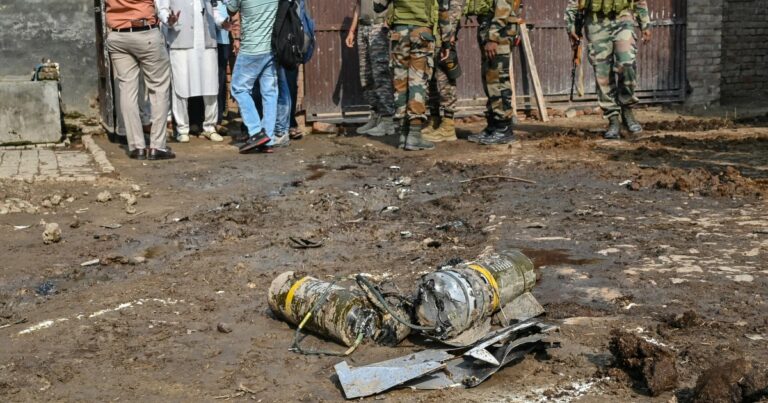On May 10, United States President Donald Trump announced a “full and immediate” ceasefire between India and Pakistan brokered by his administration. US media reported that, alarmed by intelligence signalling further escalation, Vice President JD Vance, Secretary of State Marco Rubio, and White House Chief of Staff Susie Wiles drove urgent mediation. Vance warned Indian Prime Minister Narendra Modi of catastrophic risks and encouraged direct talks between India and Pakistan.
The announcement of the ceasefire was received across the world with a sigh of relief. The spectre of a nuclear exchange, which according to one 2019 study could kill up to 125 million people in less than a week, had fuelled regional anxiety and spurred the US diplomatic frenzy.
In India, however, Trump’s announcement was seen differently in some quarters. Former Indian army chief Ved Prakash Malik posted on X: “Ceasefire 10 May 25: We have left India’s future history to ask what politico-strategic advantages, if any, were gained after its kinetic and non-kinetic actions.” MP Asaduddin Owaisi wrote on the same platform: “I wish our PM @narendramodi had announced the ceasefire rather than the President of a foreign country. We have always been opposed to third party intervention since Simla (1972). Why have we now accepted it? I hope the Kashmir issue will not be internationalised, as it is our internal matter.”
The latter comment likely refers to Trump’s statement that he is willing to work with India and Pakistan “to see if, after a ‘thousand years,’ a solution can be arrived at concerning Kashmir”.
The ceasefire announcement by the US president appears to have been perceived by some in India as a sign of the Modi government’s retreat under US pressure while his offer to mediate on Kashmir is being seen as an indication that India’s longstanding rejection of third-party intervention is being undermined.
In South Asian geopolitics, perception often outpaces reality – until reality bites. India has long projected regional dominance, bolstered by economic growth and nuclear might. Yet its actions in the aftermath of the April 22 massacre carried out by the Resistance Front (TRF) in Kashmir exposed its vulnerabilities. Intended to assert strength, India’s response faltered, boosting Pakistan’s regional standing and leaving Modi’s government diplomatically weakened.
On May 7, India launched Operation Sindoor to dismantle terrorist bases linked to groups like the TRF, which, it claims, is supported by Pakistan. Backed by French-made Rafale jets, the operation sought to project Modi’s strongman image amid domestic outrage. Yet its success was contested. Pakistan reported civilian casualties, including children, while India insisted only terrorist sites were hit.
Pakistan’s air force scrambled its own jets to deflect the attack and claimed it downed five Indian jets, including three Rafales. Two US officials confirmed to the Reuters news agency that a Chinese-made J-10 jet shot down at least two Indian planes, aided by Chinese intelligence, surveillance and reconnaissance (ISR) support. India has not acknowledged any losses.
Indian media initially claimed devastating strikes on Pakistani cities, including Karachi’s seaport, but these reports, which were clearly part of propaganda efforts, were proven false.
On May 9, India launched missile attacks on Pakistani bases, including one near Islamabad, Pakistan claimed. The Pakistani army retaliated with short-range missile and drone strikes targeting Indian airbases at Udhampur, Pathankot, Adampur and Bhuj. Indian air force officer Vyomika Singh reported Pakistani drones and munitions hit civilian and military targets.
India’s image as a regional hegemon frayed. The Indian government clearly overestimated its Rafale jets and underestimated Pakistan’s Chinese-backed ISR systems, which enhanced battlefield precision.
China’s military support for Pakistan has increased significantly in recent years. Since 2020, it has accounted for 81 percent of Islamabad’s military imports.
For years, some Indian defence analysts warned that India’s military was unprepared for a China-supported Pakistan, given its limited US or Russian backing for its high-risk Kashmir gamble. Others criticised the government’s foreign policy for encouraging China-Pakistan rapprochement. Their warnings remained unheeded in New Delhi.
The events of the past few days exposed India’s strategic limits, replacing ambiguity with global scrutiny. The kneejerk reaction in New Delhi may be to increase the defence budget and deepen even further the militarisation of Kashmir.
As the Indian government plans its next steps, it should do well to consider that the status quo of shadow war and the cycle of covert aggression fuelling unrest is untenable. Both nations’ intelligence agencies have long backed proxies, driving instability from Kashmir to Afghanistan.
The path forward rests on New Delhi and Islamabad making wise choices. Restraint, not rhetoric, should shape policies moving forward. Failure to do so risks geopolitical turmoil, economic stagnation and hardship for millions. Home to a quarter of the world’s poorest people and more than 350 million illiterate adults, India and Pakistan cannot afford prolonged strife. Continued tensions could derail India’s growth and cripple Pakistan’s fragile economy, dwarfing any tactical gains.
The views expressed in this article are the author’s own and do not necessarily reflect Al Jazeera’s editorial stance.

